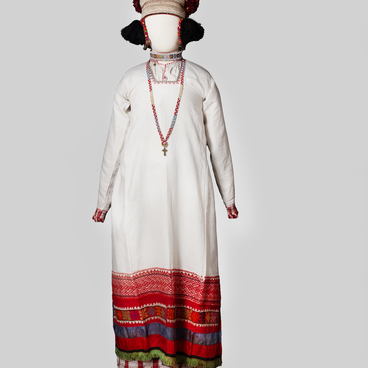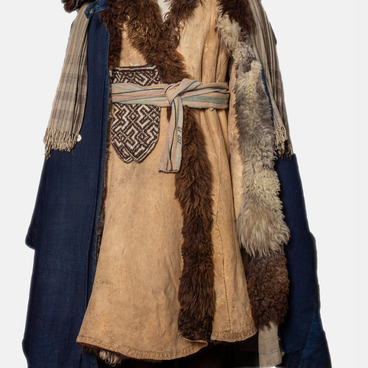The belt was an indispensable part of Russian costume, both men’s and women’s. Even children’s costumes included a belt. In the popular consciousness, the belt was equal in importance to the cross, as evidenced by the proverb: “He walks like a Tatar without a cross, without a belt.”
The Old Believers were especially reverent about the belt. During the sacrament of baptism, the child was given not only a cross to wear around the neck but also a thin belt, which was tied around the waist and perceived by the adherents of the old faith as a sign of belonging to the Old Orthodox Church.
There were long (up to three meters) and short belts (waist-length, with clasps), as well as wide and narrow ones. Methods of tying them were different. Wide kushak belts, designed for outer clothing were wrapped around the waist twice, with the ends either tucked behind the belt or let down on the sides.
The belts of some groups of Russian people had distinct differences. Such are the belts of Old Believers-Poles, one of the groups who migrated to the Altai Mountains in the second half of the 18th century. Here the belt remained the most important part of the costume during the 20th century. Both men and women girt with narrow ribbons and wide, up to 20 centimeters, kushaks that were plaited or woven from wool and cotton threads and decorated with stripes or convex geometric patterns that also included letters and words, solar signs including swastikas. The patterned rows and inscriptions reinforced the protective function of the belt. The inscriptions featured prayers, the owners’ names, place names and dates, love messages or sayings from well-known texts such as songs.
The bright tones of the Poles’ belt made it especially colorful. The ends of the belt were decorated with thick tassels of long colored threads, fringes, and balls of thread. Young women encircled their waist with the belt once or twice, tied it with a knot on the right side and let the ends come down. Wide belts were folded in half and put around the waist; the ends were then pulled through the loop and put one on top of the other.

